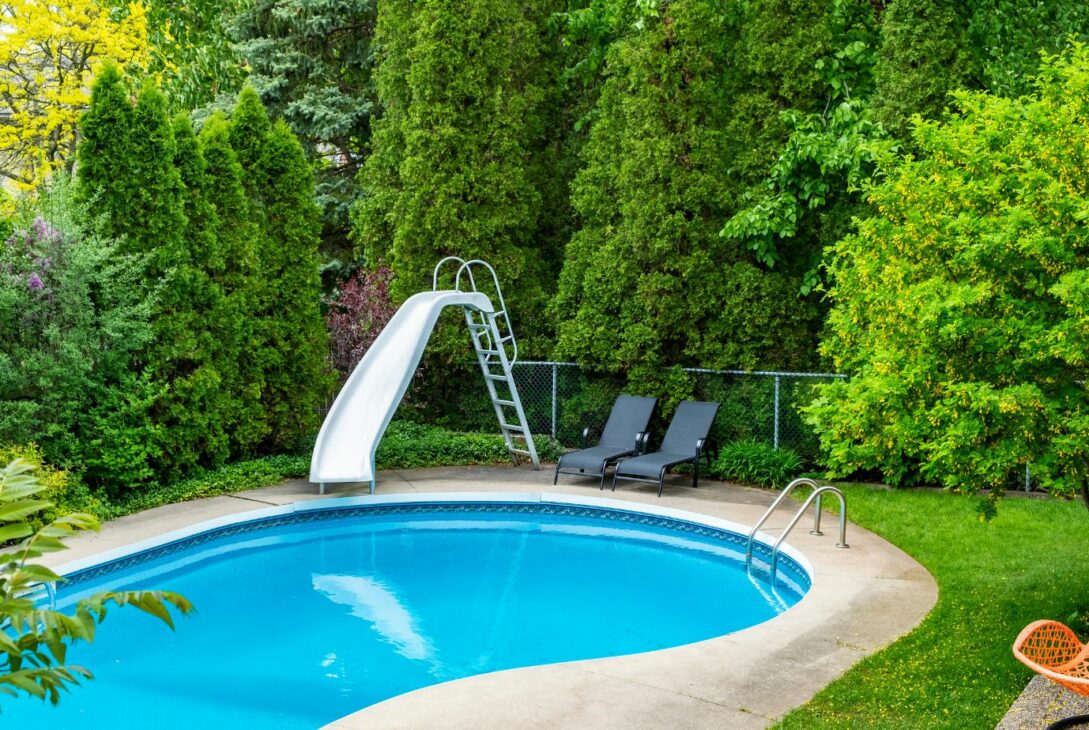If you’re planning on adding a pool to your backyard, the first thing you need to consider is your budget. How much are you willing to spend on the project? This will determine the size and type of pool you can get. It’s important to get an idea of how much the project will cost before you get started so you don’t end up spending more than you can afford.
Is a Backyard Pool Worth it
As you begin planning for a pool in your backyard, one of the first things you’ll need to decide is how much you’re willing to spend. There are a number of factors that can affect the cost of a pool, including size, type and location.
Before you start shopping around, it’s important to have a budget in mind. This will help you narrow down your options and avoid overspending. Here are five things to consider when determine how much you’re willing to spend on a pool:
1. The size of the pool. Larger pools will obviously cost more than smaller ones. But keep in mind that the size of your yard will also play a role in how big of a pool you can realistically put in.
2. The type of pool. There are several different types of pools on the market, from above-ground models to inground designs. Inground pools tend to be more expensive than above-ground models, but they also offer more features and benefits.
3. The location of the pool. Another factor that can affect the cost of a pool is its location. If you live in an area with a high water table, for example, digging an inground pool may be more expensive than if you lived in an area with a lower water table.
4. The features and extras you want. Pools come with a variety of features and extras these days, from slides and diving boards to built-in hot tubs and waterfalls. Obviously, the more features and extras you want, the higher the price tag will be.
5 .The cost of installation . Once you’ve settled on a size, location and list of desired features, it’s time to start shopping around for prices from different contractors . The cost of installation can vary significantly from one contractor to another , so it pays to get multiple estimates before making any decisions . Budget for other associated expenses . In addition to the costs associated with purchasing and installing your pool , there are also ongoing costs associated with owning one . These include chemicals , heating , lighting , maintenance , repairs , etc . Be sure to factor these costs into your budget when making your decision .
Calculate The Cost Of Installation And Ongoing Maintenance
Calculating the cost of installation and ongoing maintenance is one of the most important things to consider before putting a pool in your backyard. The cost of a pool can vary depending on the type of pool, the location, and the condition of your property. In general, inground pools cost more to install and maintain than above ground pools.
Installation costs can range from $5,000 to $30,000 or more, depending on the type of pool, the size, and the condition of your property. Inground pools typically cost more to install than above ground pools, but they also add more value to your home. Above ground pools are less expensive to install and maintain, but they may not increase the value of your home as much as an inground pool.
Ongoing maintenance costs for a pool can range from $100 to $600 per year, depending on the type of pool and the size. Inground pools typically cost more to maintain than above ground pools because they require more chemicals and greater filtration. Above ground pools are less expensive to maintain because they require fewer chemicals and less filtration.
Measure The Available Space In Your Backyard
pools come in all shapes and sizes, so it’s important to know how much space you have to work with before you start shopping. Use a measuring tape to determine the length and width of your desired pool area, then add an extra 2 feet on all sides for the pool’s frame and any other patio furniture you might want to include in the area. Once you have your pool’s dimensions, multiply the length by the width to find out how many square feet of space your pool will occupy.
Choose The Type Of Pool That Will Best Fit The Space
When you’re planning to put a pool in your backyard, one of the first things you need to consider is the amount of space you have. There are many different types of pools available on the market, from small above-ground models to large inground ones. You need to make sure that you choose a pool that will fit comfortably in your backyard without taking up too much space.
Here are 5 things to consider before putting a pool in your backyard:
1. The size of your backyard: This is one of the most important factors to consider when choosing a pool. You need to make sure that the pool you choose will fit comfortably in your backyard without taking up too much space.
2. The type of pool: There are many different types of pools available on the market, from small above-ground models to large inground ones. You need to decide which type of pool would be best for your backyard.
3. The climate: If you live in an area with a warm climate, an inground pool would be a good choice. However, if you live in an area with a cold climate, an above-ground pool would be a better choice because it can be taken down and stored during the winter months.
4. The cost: Inground pools are usually more expensive than above-ground pools, so you need to take this into consideration when choosing which type of pool to buy.
5. Maintenance: Inground pools require more maintenance than above-ground pools, so you need to decide if you’re willing to put in the extra work required to keep an inground pool clean and functioning properly.

Consider The Climate In Your Area
When most people think about putting a pool in their backyard, they envision hot summer days spent cooling off in the water. But if you live in an area with a cool climate, you need to think carefully before taking the plunge. Here are five things to consider.
1. The average temperature in your area. If the average temperature in your area is below 70 degrees Fahrenheit (21 degrees Celsius), you probably won’t be using your pool very much.
2. The number of sunny days. Even if the average temperature is above 70 degrees, you won’t be able to use your pool much if there aren’t many sunny days.
3. The wind chill factor. If the wind blows constantly in your area, the water in your pool will be cold and uncomfortable.
4. The cost of heating the pool. If you do decide to heat your pool, it will add significantly to the cost of owning and operating it.
5. The amount of time you’re willing to spend maintaining the pool. Keeping a pool clean and inviting requires time and effort, even if you have a professional service to do it for you.
Determine How You Will Use The Pool
Before you begin looking at pools, it’s important to sit down and think about how you and your family will use the pool. Here are five things to consider:
1. primary use: do you want a pool for swimming laps or for relaxing?
2. Time of year: will you use the pool year-round or just during the summer?
3. Size: how large of a pool do you need?
4. Depth: how deep does the pool need to be?
5. Location: where do you want to put the pool in your yard?

Choose A Pool That Will Meet Your Needs
If you’re considering adding a pool to your backyard, there are a few things you’ll need to take into account. Here are 5 things to consider before putting a pool in your backyard:
1. How will you use the pool?
For instance, do you want a pool for swimming laps, relaxing or entertaining guests? This will help determine the size, shape and depth of the pool.
2. What is your budget?
Pools can range in price from a few thousand dollars to tens of thousands, so it’s important to have an idea of how much you’re willing and able to spend.
3. How much space do you have?
You’ll need enough space for the pool itself, plus additional space around it for decking, seating, lounging, etc.
4. What is the climate like where you live?
If you live in an area with a colder climate, you’ll need to factor in the cost of heating the pool. Additionally, if you live in a hurricane-prone area, you’ll need to make sure your pool can withstand high winds.
5. Are there any zoning or homeowner association restrictions?
Before finalizing your plans, check with your local zoning office and homeowner association (if applicable) to make sure there are no restrictions on pools in your neighborhood.
Consider The Amount Of Maintenance You Are Willing To Do
Before you install a pool, it’s important to consider the amount of maintenance you are willing to do. Caring for a pool can be time-consuming and expensive, so be sure you are prepared for the commitment.
Here are five things to consider before putting a pool in your backyard:
1. The type of pool you select will determine the amount of maintenance required. Above-ground pools tend to be less work than in-ground pools, for example.
2. The size of your pool will also affect the amount of maintenance required. A larger pool will take more time and effort to care for than a smaller one.
3. The climate in your area can impact how often you need to maintain your pool. If you live in a warmer climate, you may need to clean your pool more often than if you live in a cooler area.
4. The type of filtration system you choose will play a role in how much maintenance your pool requires. A sand filter, for example, will need to be replaced every few years, while a cartridge filter can last up to 10 years.
5. Finally, be sure to factor in the cost of chemicals and supplies when considering how much it will cost to maintain your pool.



